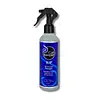What's inside
What's inside
 Key Ingredients
Key Ingredients

No key ingredients
 Benefits
Benefits

 Concerns
Concerns

 Ingredients Side-by-side
Ingredients Side-by-side

Water
Skin ConditioningPropylene Glycol
HumectantCetearyl Alcohol
EmollientBehentrimonium Chloride
PreservativeHydroxypropylammonium Gluconate
HumectantHydroxypropylgluconamide
HumectantQuaternium-80
Niacin
SmoothingParfum
MaskingTocopheryl Acetate
AntioxidantSodium Dilauramidoglutamide Lysine
HumectantPhenoxyethanol
PreservativeCaprylic/Capric Triglyceride
MaskingPanthenol
Skin ConditioningBiotin
AntiseborrhoeicDisodium EDTA
Ethylhexylglycerin
Skin ConditioningLinalool
PerfumingHydroxycitronellal
PerfumingGeraniol
PerfumingCitronellol
PerfumingWater, Propylene Glycol, Cetearyl Alcohol, Behentrimonium Chloride, Hydroxypropylammonium Gluconate, Hydroxypropylgluconamide, Quaternium-80, Niacin, Parfum, Tocopheryl Acetate, Sodium Dilauramidoglutamide Lysine, Phenoxyethanol, Caprylic/Capric Triglyceride, Panthenol, Biotin, Disodium EDTA, Ethylhexylglycerin, Linalool, Hydroxycitronellal, Geraniol, Citronellol
Water
Skin ConditioningDicetyldimonium Chloride
EmulsifyingPropylene Glycol
HumectantHelianthus Annuus Extract
EmollientAloe Barbadensis Leaf Extract
EmollientChamomilla Recutita Extract
Skin ConditioningPhenoxyethanol
PreservativeDiazolidinyl Urea
PreservativeCalendula Officinalis Flower Extract
MaskingIsoceteth-20
EmulsifyingParfum
MaskingDisodium EDTA
Polyquaternium-7
Panthenol
Skin ConditioningSilk Amino Acids
HumectantPotassium Sorbate
PreservativeBenzophenone-4
UV AbsorberSodium PCA
HumectantLactic Acid
BufferingLimonene
PerfumingLinalool
PerfumingWater, Dicetyldimonium Chloride, Propylene Glycol, Helianthus Annuus Extract, Aloe Barbadensis Leaf Extract, Chamomilla Recutita Extract, Phenoxyethanol, Diazolidinyl Urea, Calendula Officinalis Flower Extract, Isoceteth-20, Parfum, Disodium EDTA, Polyquaternium-7, Panthenol, Silk Amino Acids, Potassium Sorbate, Benzophenone-4, Sodium PCA, Lactic Acid, Limonene, Linalool
Ingredients Explained
These ingredients are found in both products.
Ingredients higher up in an ingredient list are typically present in a larger amount.
Disodium EDTA plays a role in making products more stable by aiding other preservatives.
It is a chelating agent, meaning it neutralizes metal ions that may be found in a product.
Disodium EDTA is a salt of edetic acid and is found to be safe in cosmetic ingredients.
Learn more about Disodium EDTALinalool is a fragrance and helps add scent to products. It's derived from common plants such as cinnamon, mint, citrus, and lavender.
Like Limonene, this ingredient oxidizes when exposed to air. Oxidized linalool can cause allergies and skin sensitivity.
This ingredient has a scent that is floral, spicy tropical, and citrus-like.
Learn more about LinaloolPanthenol is a common ingredient that helps hydrate and soothe the skin. It is found naturally in our skin and hair.
There are two forms of panthenol: D and L.
D-panthenol is also known as dexpanthenol. Most cosmetics use dexpanthenol or a mixture of D and L-panthenol.
Panthenol is famous due to its ability to go deeper into the skin's layers. Using this ingredient has numerous pros (and no cons):
Like hyaluronic acid, panthenol is a humectant. Humectants are able to bind and hold large amounts of water to keep skin hydrated.
This ingredient works well for wound healing. It works by increasing tissue in the wound and helps close open wounds.
Once oxidized, panthenol converts to pantothenic acid. Panthothenic acid is found in all living cells.
This ingredient is also referred to as pro-vitamin B5.
Learn more about PanthenolParfum is a catch-all term for an ingredient or more that is used to give a scent to products.
Also called "fragrance", this ingredient can be a blend of hundreds of chemicals or plant oils. This means every product with "fragrance" or "parfum" in the ingredients list is a different mixture.
For instance, Habanolide is a proprietary trade name for a specific aroma chemical. When used as a fragrance ingredient in cosmetics, most aroma chemicals fall under the broad labeling category of “FRAGRANCE” or “PARFUM” according to EU and US regulations.
The term 'parfum' or 'fragrance' is not regulated in many countries. In many cases, it is up to the brand to define this term.
For instance, many brands choose to label themselves as "fragrance-free" because they are not using synthetic fragrances. However, their products may still contain ingredients such as essential oils that are considered a fragrance by INCI standards.
One example is Calendula flower extract. Calendula is an essential oil that still imparts a scent or 'fragrance'.
Depending on the blend, the ingredients in the mixture can cause allergies and sensitivities on the skin. Some ingredients that are known EU allergens include linalool and citronellol.
Parfum can also be used to mask or cover an unpleasant scent.
The bottom line is: not all fragrances/parfum/ingredients are created equally. If you are worried about fragrances, we recommend taking a closer look at an ingredient. And of course, we always recommend speaking with a professional.
Learn more about ParfumPhenoxyethanol is a preservative that has germicide, antimicrobial, and aromatic properties. Studies show that phenoxyethanol can prevent microbial growth. By itself, it has a scent that is similar to that of a rose.
It's often used in formulations along with Caprylyl Glycol to preserve the shelf life of products.
Propylene Glycol is an odorless, colorless liquid. As a humectant, it helps skin retain moisture. It also aids in delivering active ingredients.
Another role of this ingredient is preventing a product from melting or freezing. Propylene glycol also adds antimicrobrial properties to a product, elongating product lifespan.
This ingredient is considered an organic alcohol and commonly added into both cosmetics and foods.
Those with sensitive skin or conditions may develop a rash when using this ingredient.
Learn more about Propylene GlycolWater. It's the most common cosmetic ingredient of all. You'll usually see it at the top of ingredient lists, meaning that it makes up the largest part of the product.
So why is it so popular? Water most often acts as a solvent - this means that it helps dissolve other ingredients into the formulation.
You'll also recognize water as that liquid we all need to stay alive. If you see this, drink a glass of water. Stay hydrated!
Learn more about Water